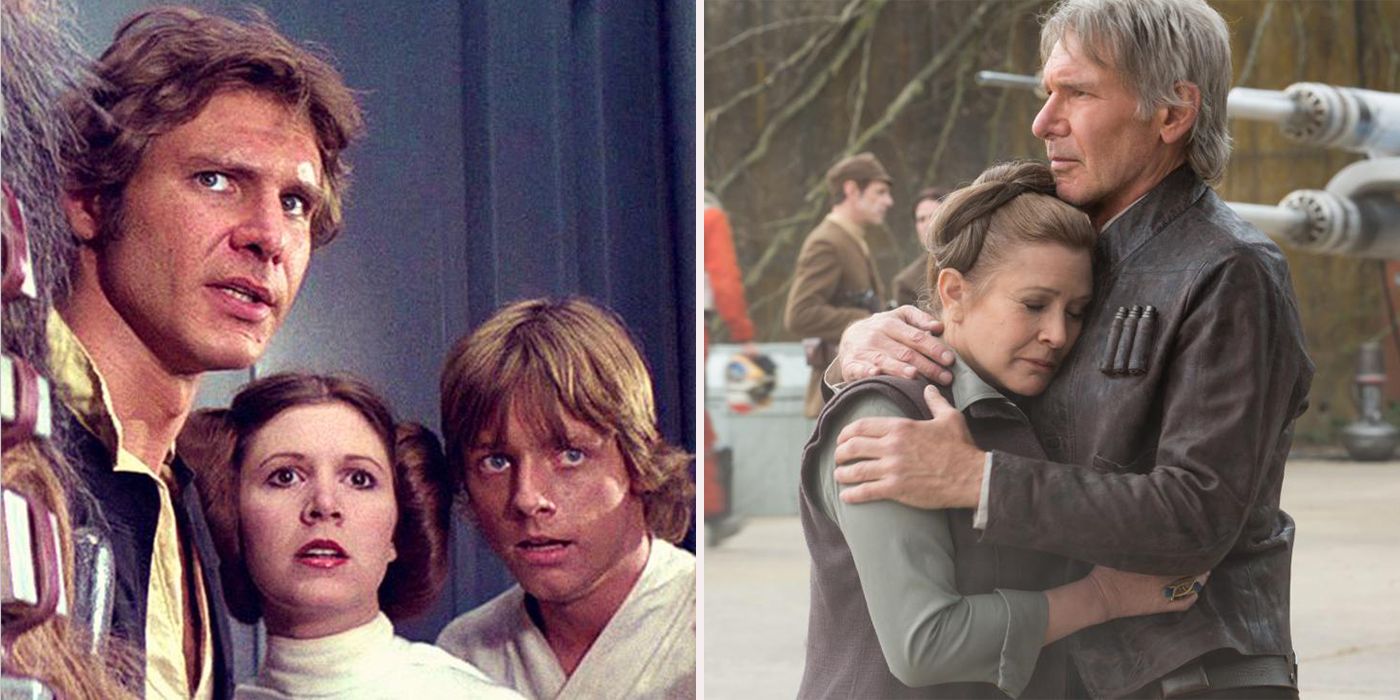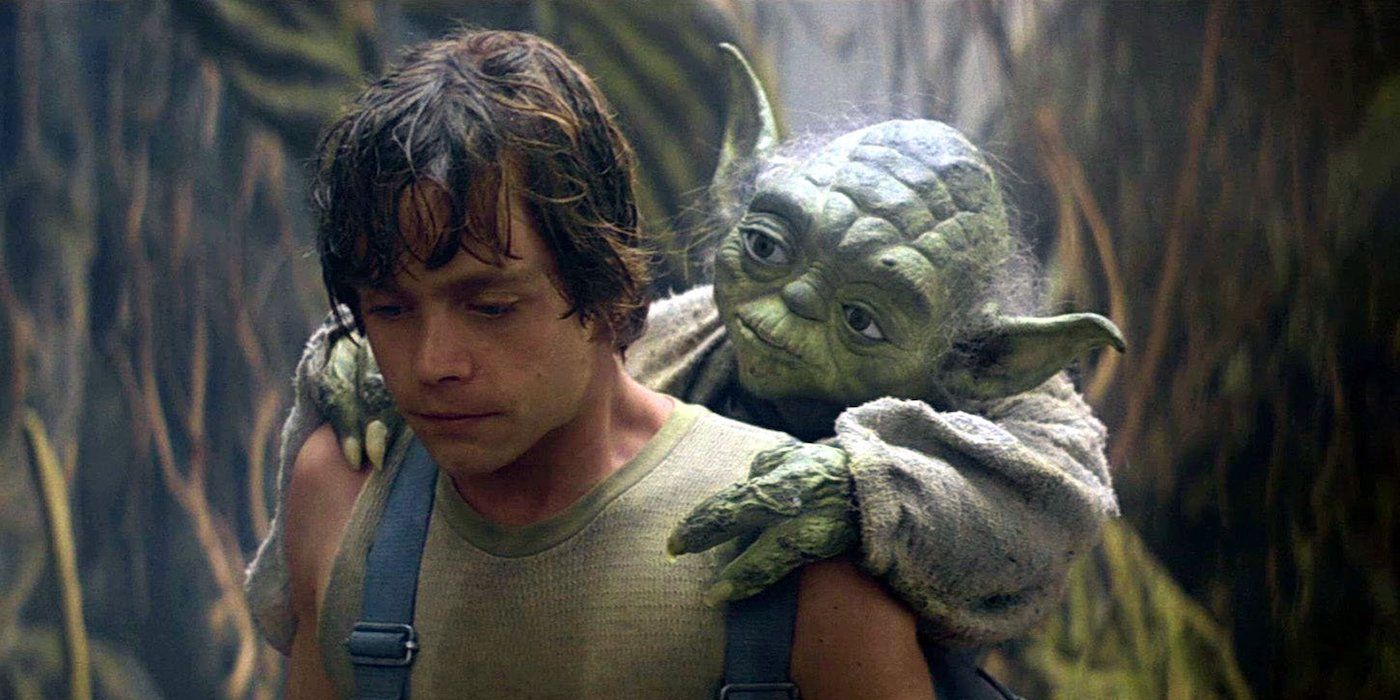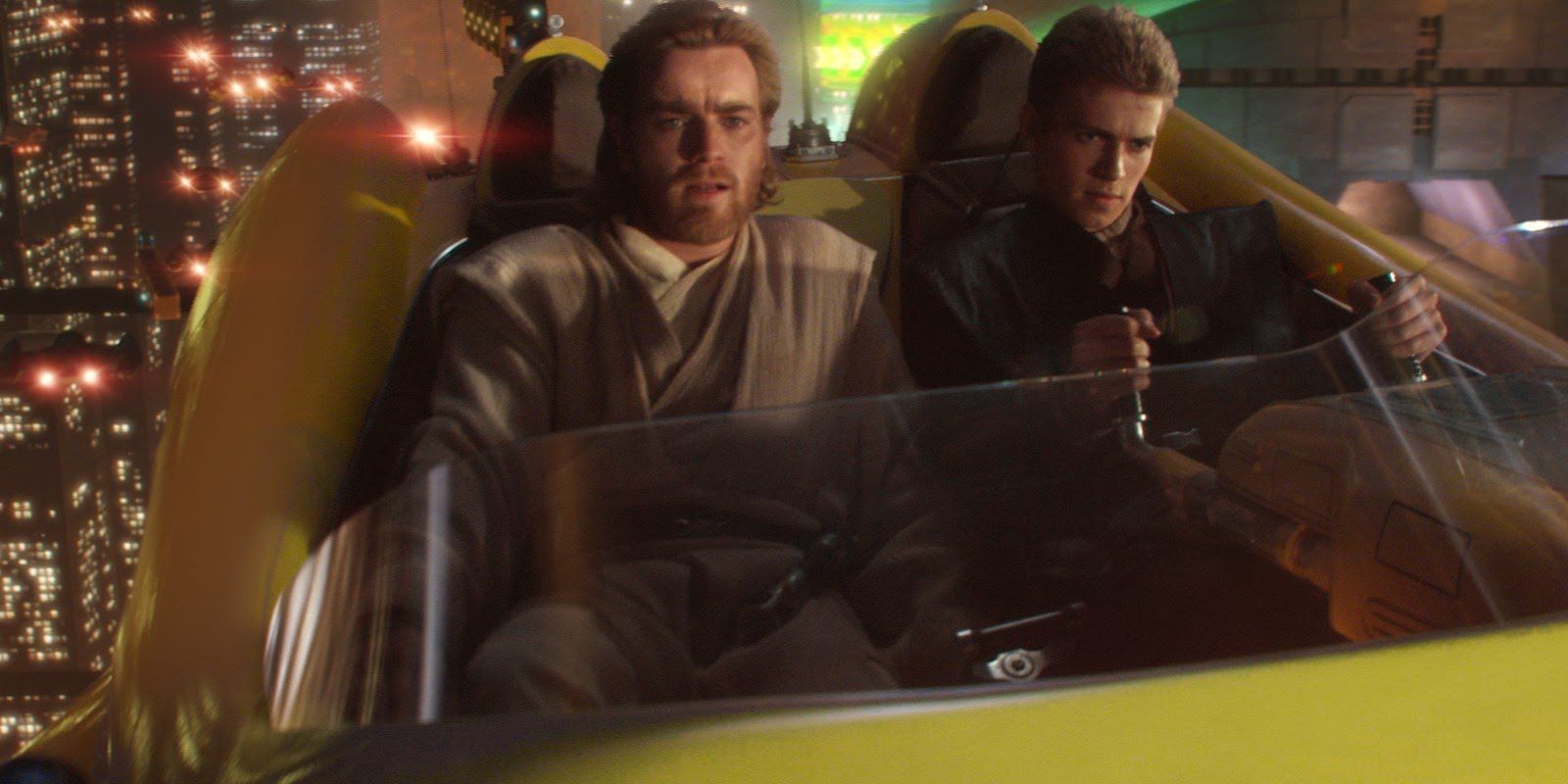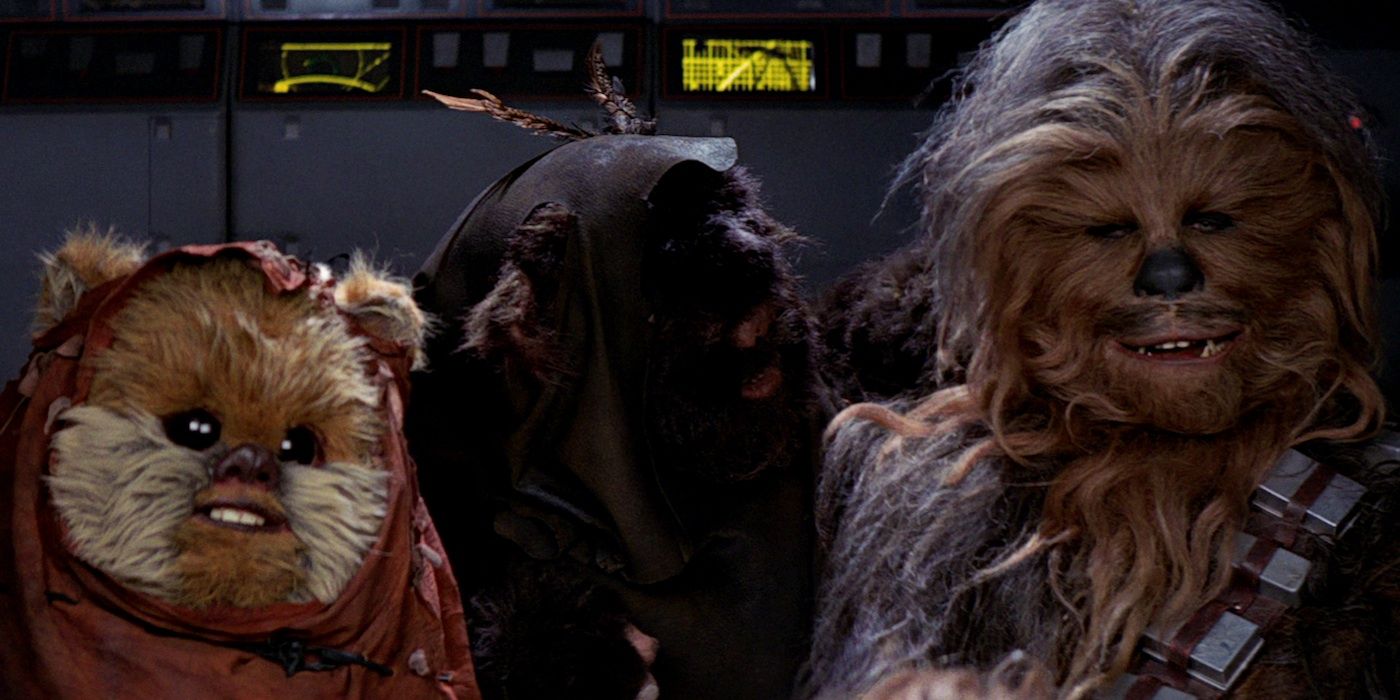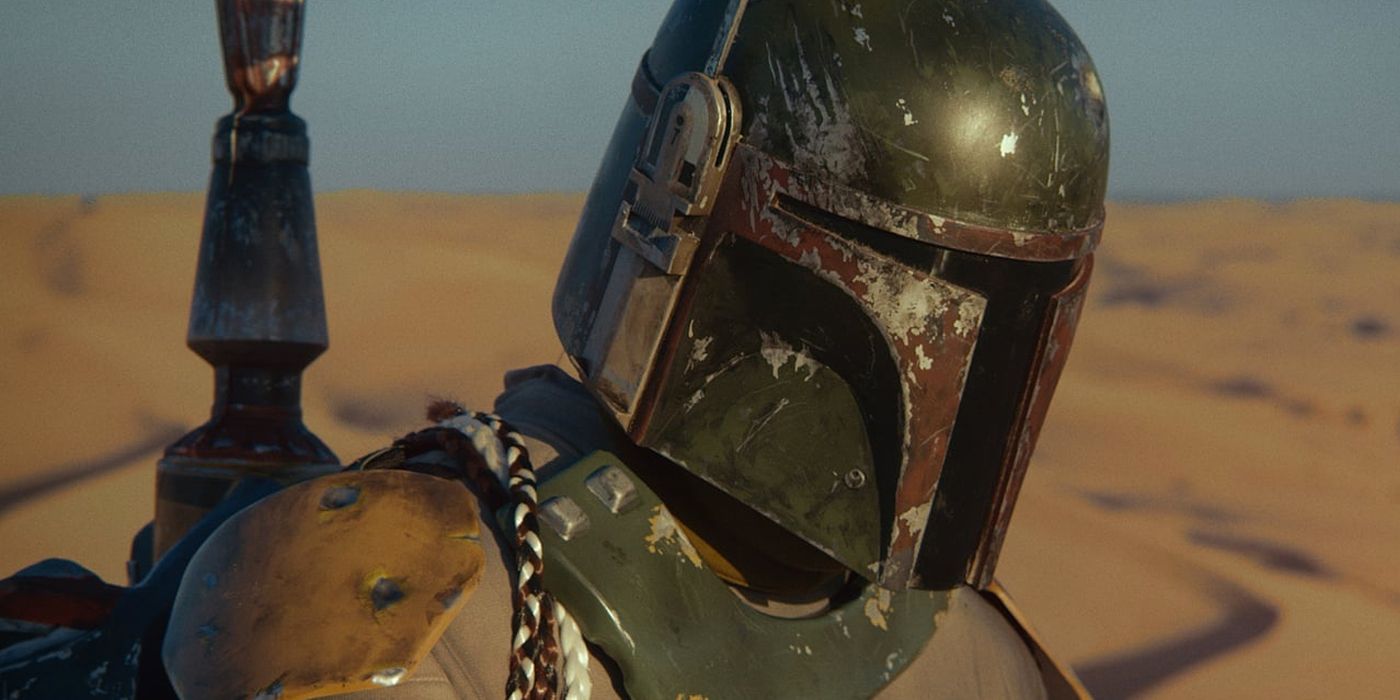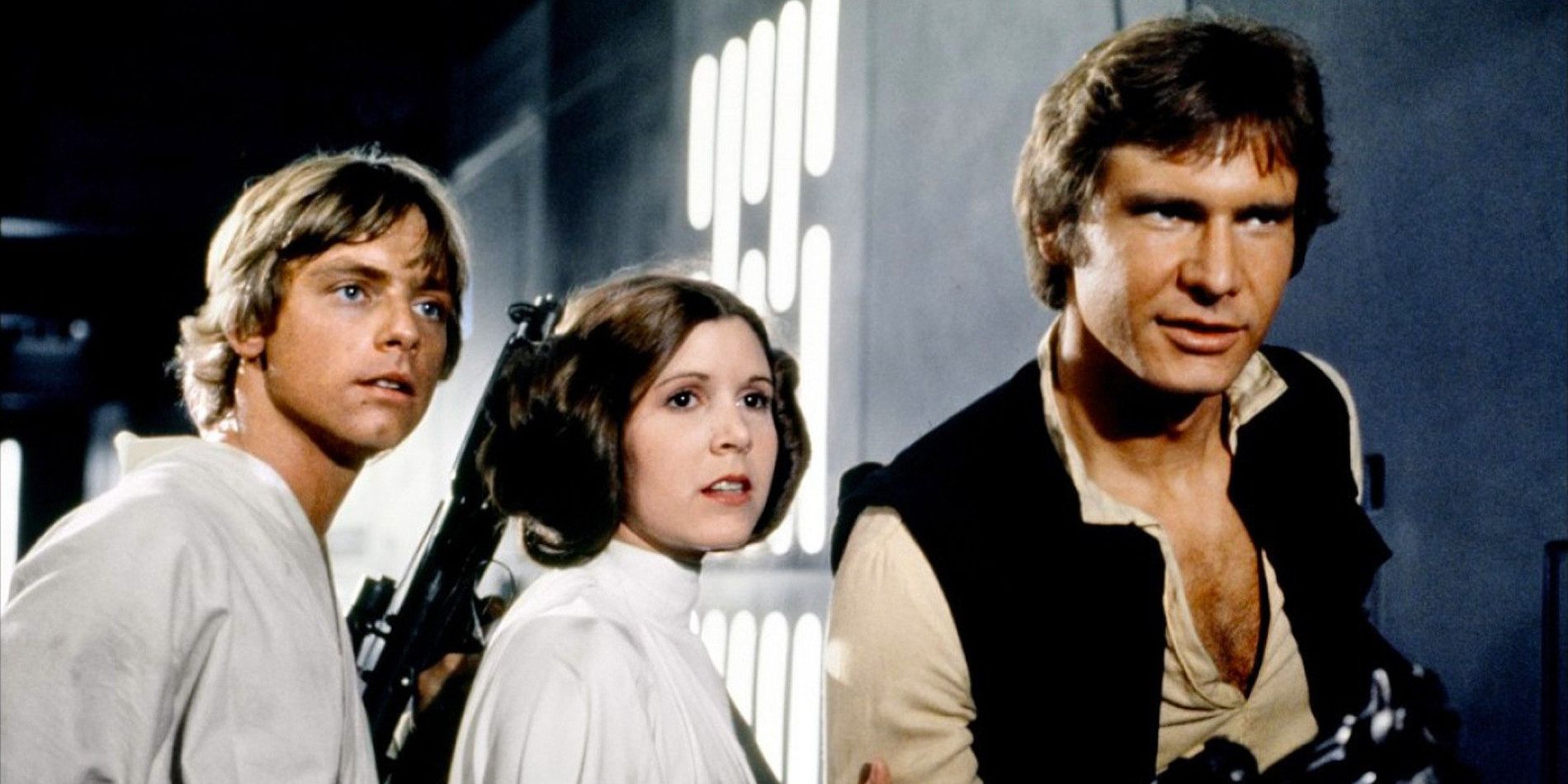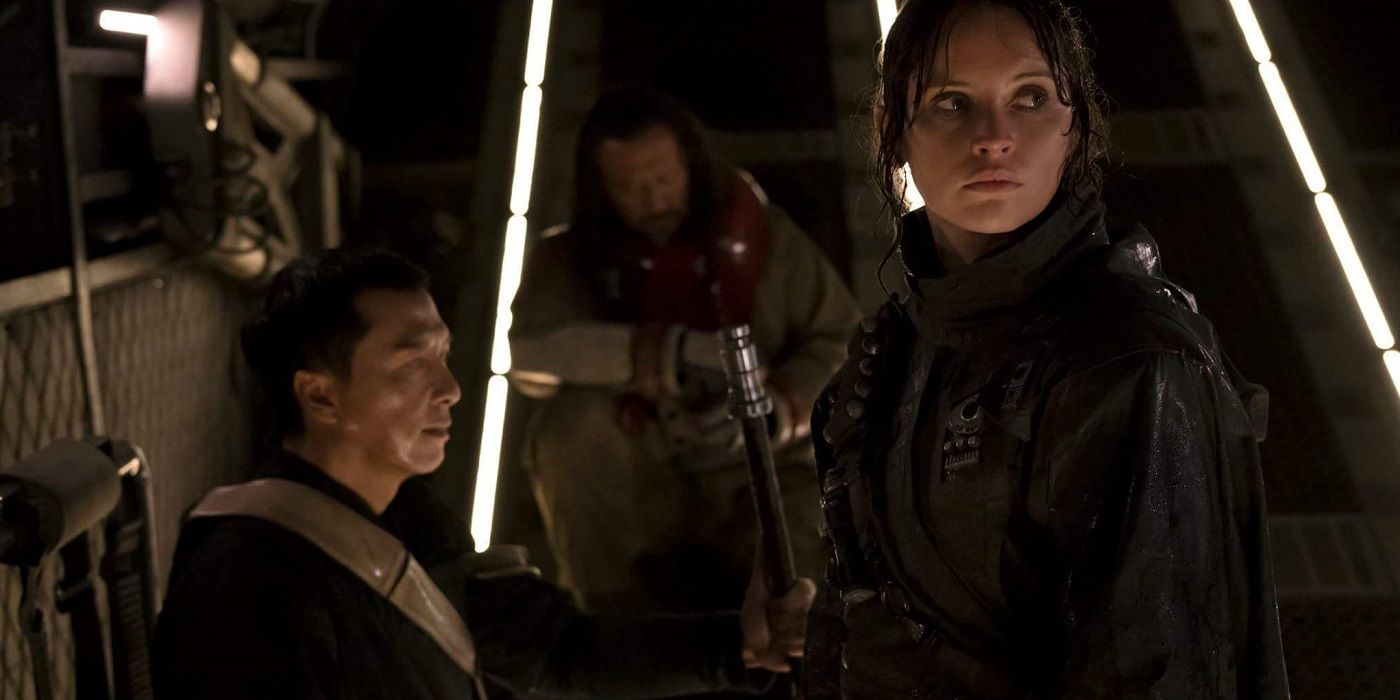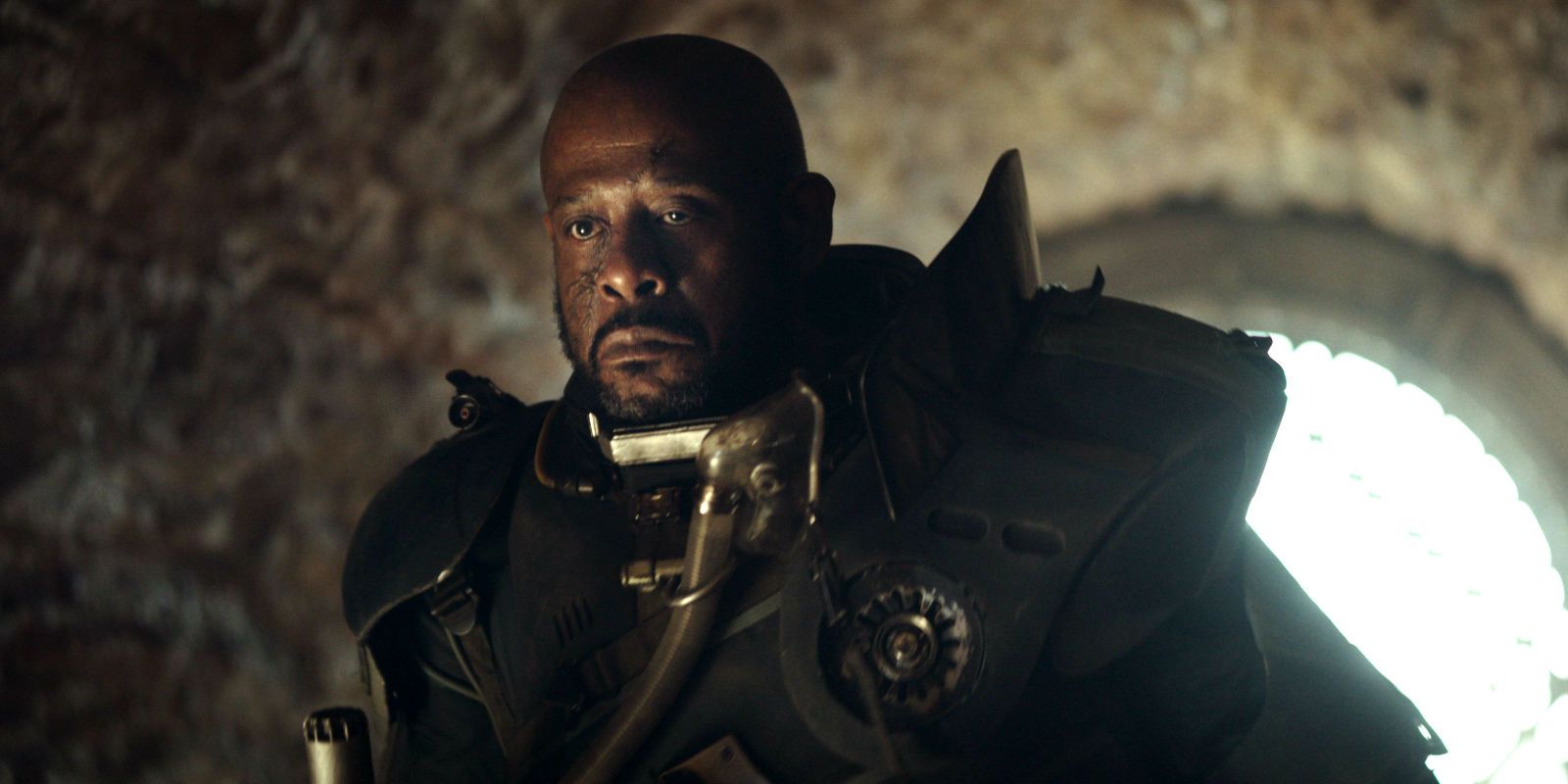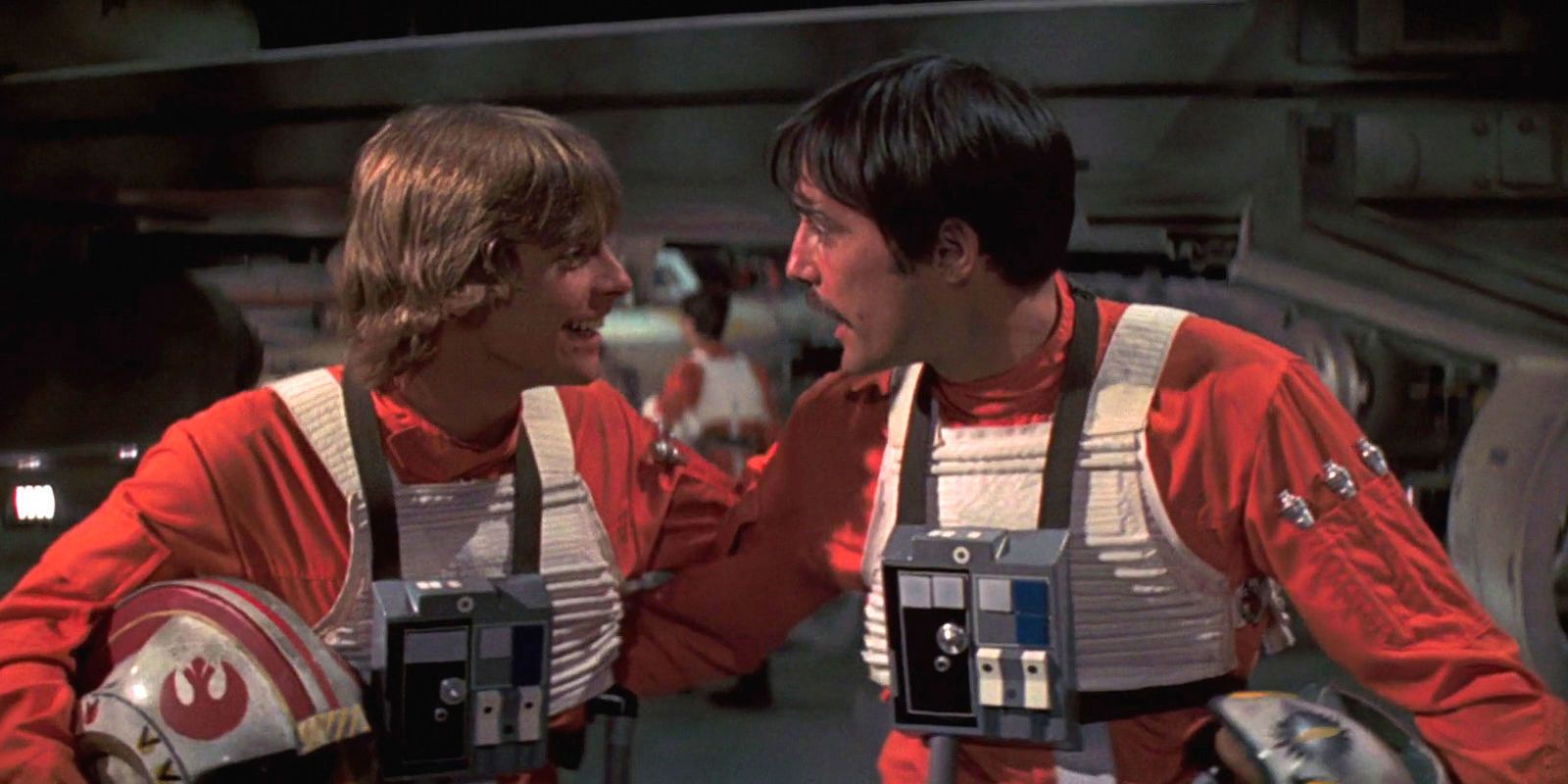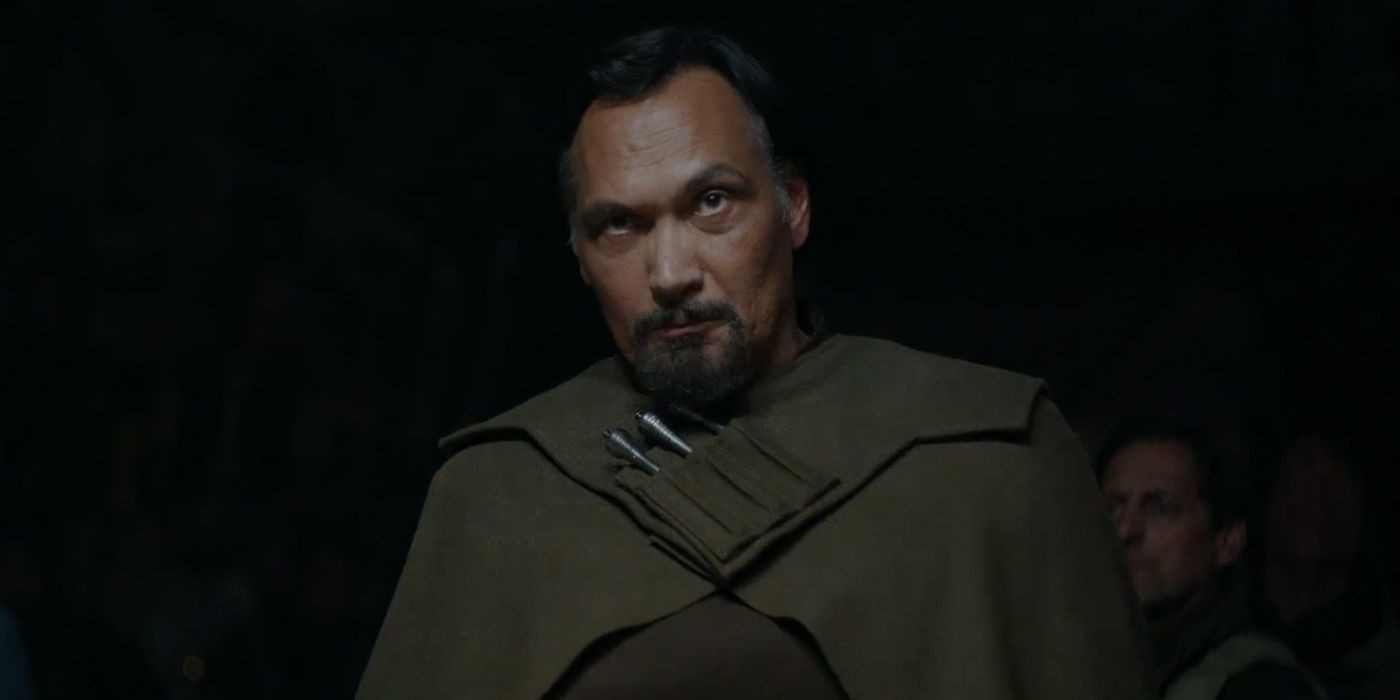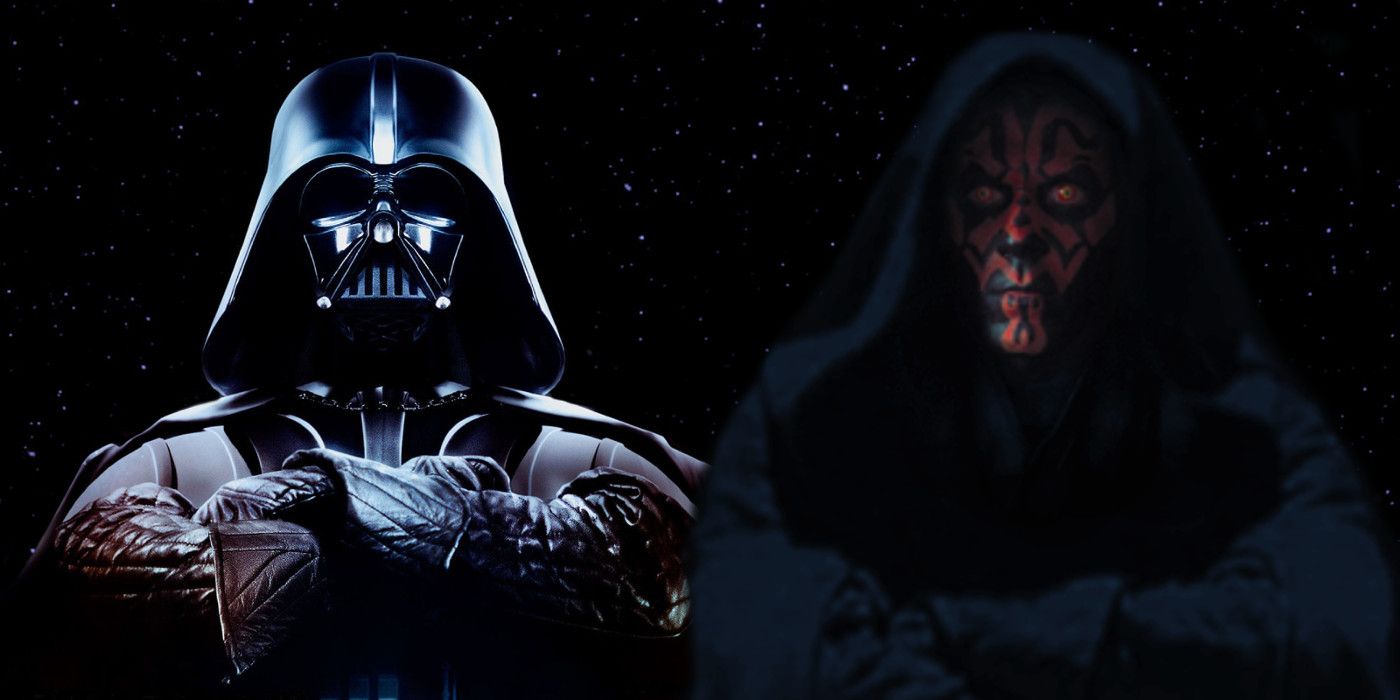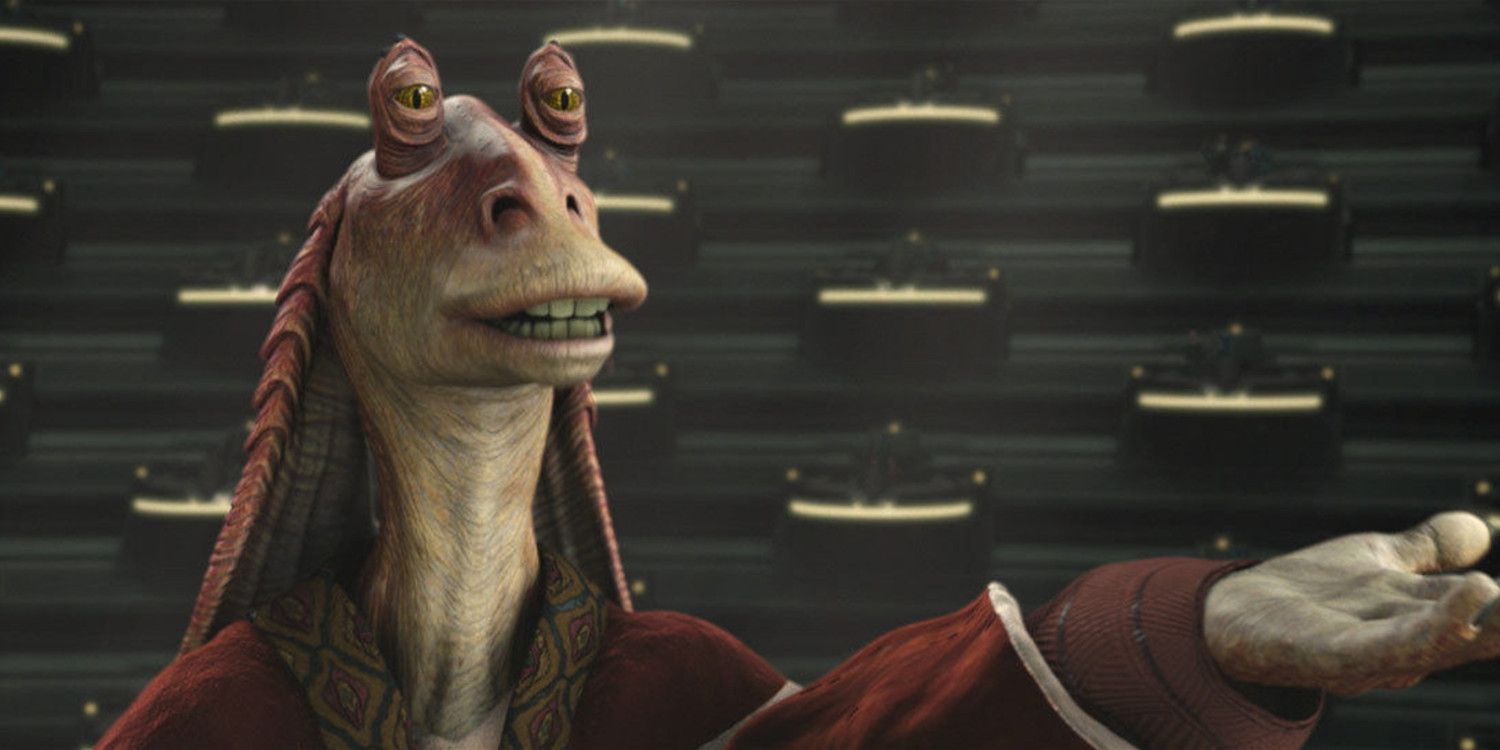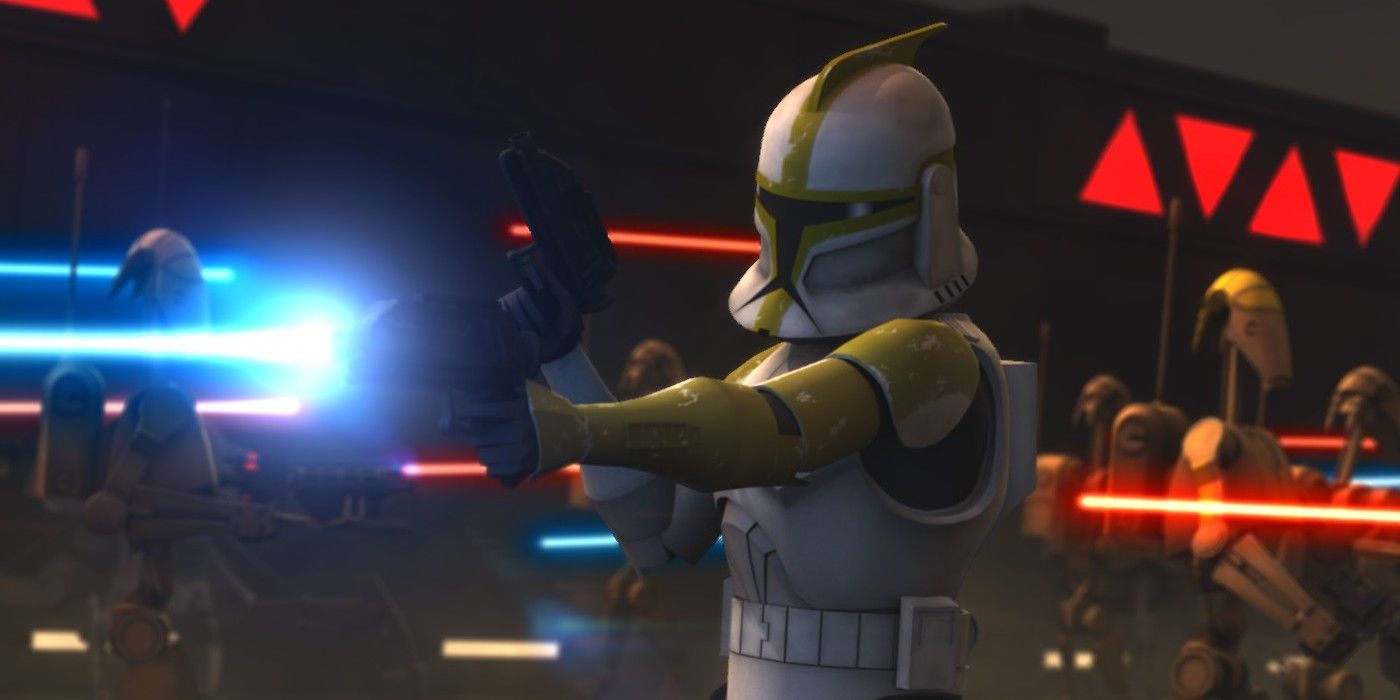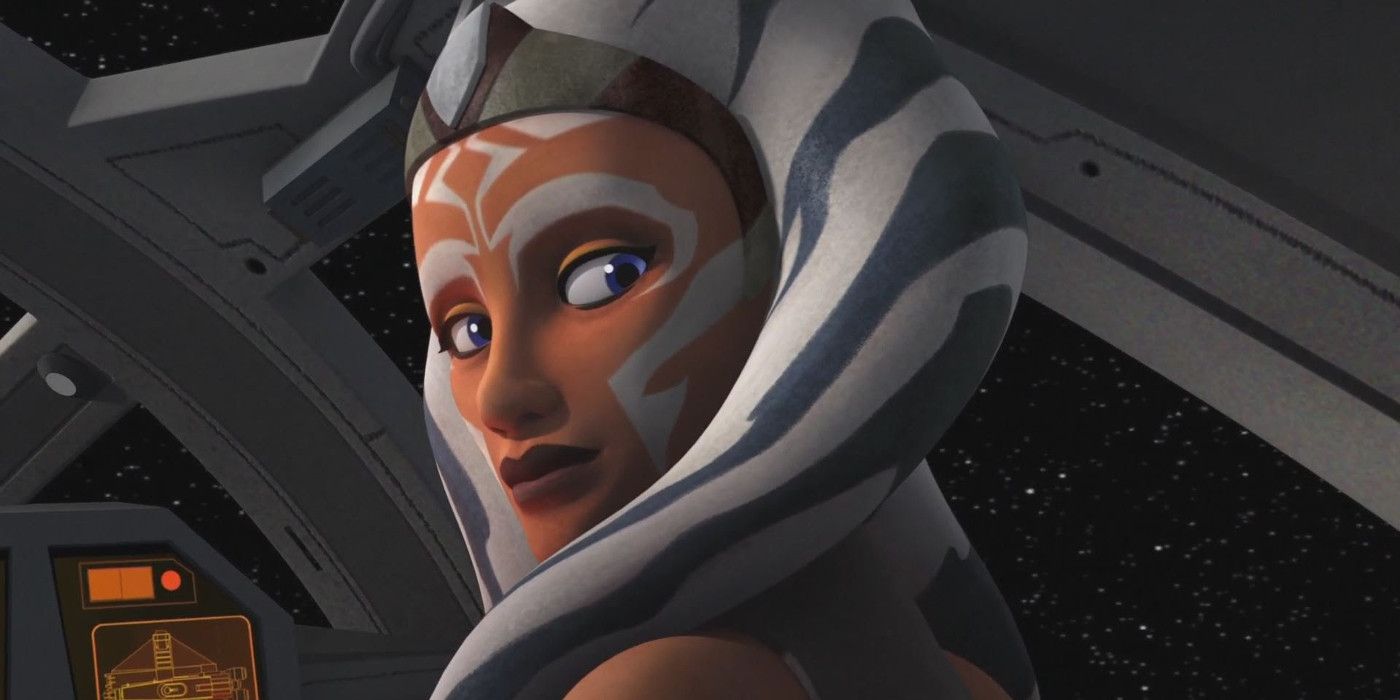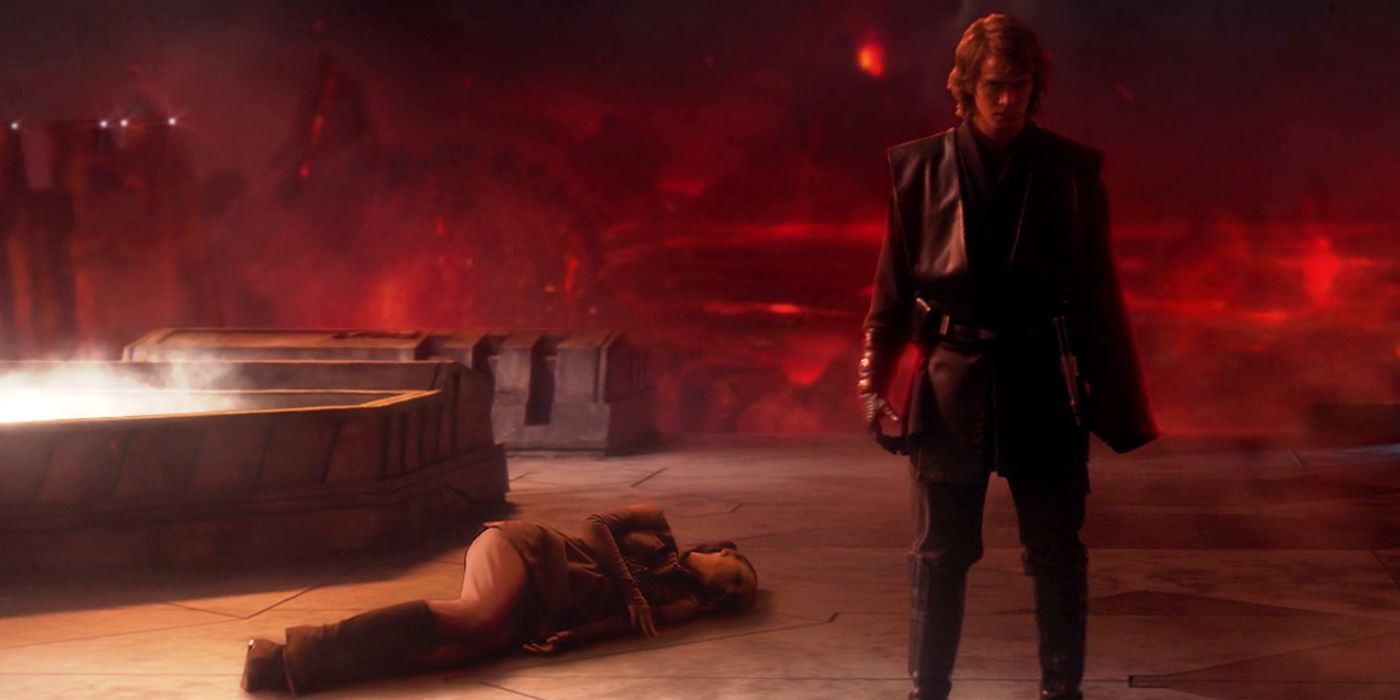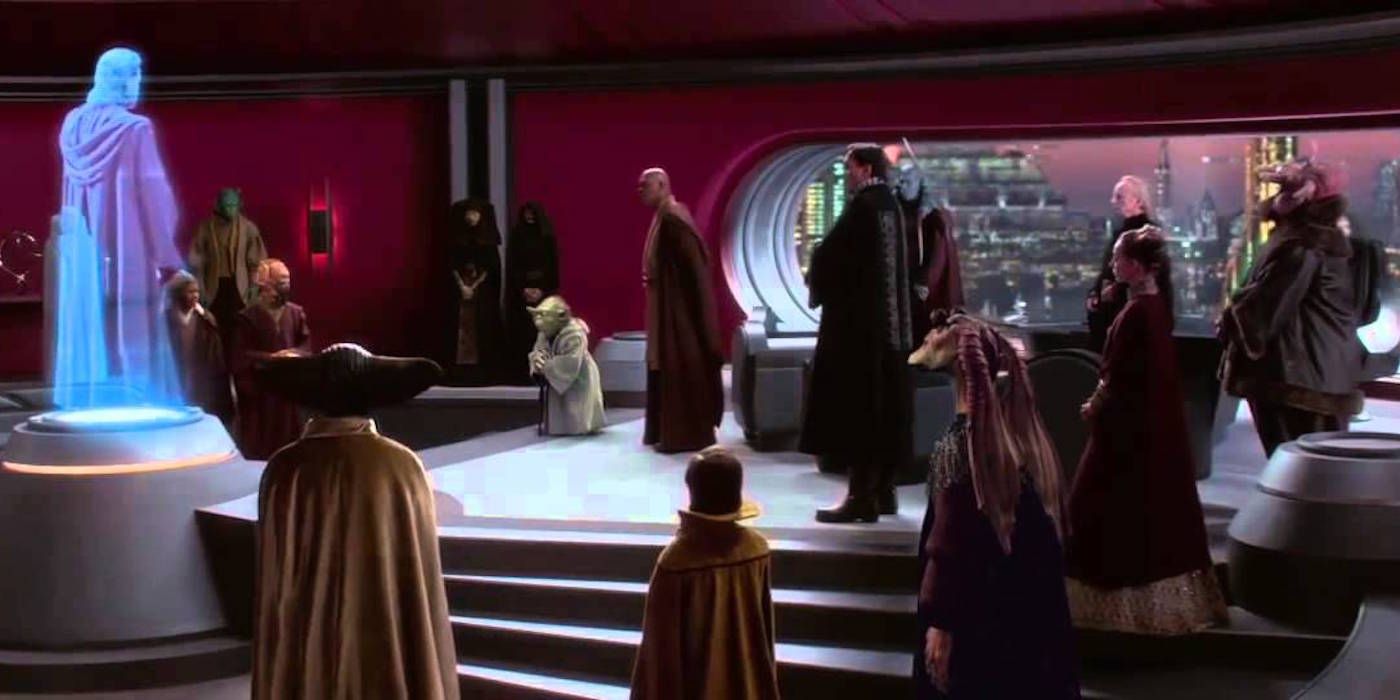In a recent interview, Mark Hamill, who plays Luke Skywalker, said that the choice to not reunite Luke Skywalker, Leia Organa, and Han Solo in The Force Awakens (2015) was "a missed oppportunity." After the fictional death of Han Solo and the real-life passing of Carrie Fisher, who played Princess Leia, this reunion now seems impossible. Hamill envisioned Luke and Leia arriving on Starkiller Base just in time to see Kylo Ren kill Han Solo, but given that The Force Awakens was the first film in the new sequel trilogy, there are infinite ways that the original three heroes could end up in the same place.
This list examines the eight canon Star Wars films and the two canon television shows, exploring moments, scenes, and movies that seem like "missed opportunities". In order to be a "missed opportunity", the chosen item needs to feel like a misstep - not only a mistake, but have a clear potential alternative that would have served the Star Wars universe better. Of course, it's easy to imagine, "What if?", but this list is meant to explore some major parts of Star Wars that fans missed out on from the original trilogy all the way to Rogue One (2016).
Here are the 15 Missed Opportunities in Star Wars:
15. Not Showing Jedi Training & Lightsaber Construction (ESB & ROTJ)
Despite the Jedi being at the heart of the Star Wars films, there is very little training that appears on the screen; more often than not, the breakthroughs, exercises, and growth generally appear to happen in montages or completely off-screen. Because of the "time jumps" that occur during Luke's Jedi training (or in the case of the prequels, between films), there is still quite a bit of mystery about what goes into (and how long it takes) to become a Jedi Knight. Additionally, Luke's lightsaber construction was cut from Return of the Jedi. This Jedi passage would have been a powerful moment to put on screen. Some of these questions and missed opportunities are remedied in the television shows: The Clone Wars (2008) explores lightsaber construction and Rebels (2014) includes some of Ezra Bridger's training. However, The Last Jedi could be an exciting opportunity to explore Jedi training and Rey's growth on the big screen.
14. Not Showing Anakin and Obi-Wan Kenobi's friendship (AOC, ROTS)
A large part of the tragedy of the original trilogy hinges on Anakin Skywalker's betrayal of Obi-Wan Kenobi, but the prequel trilogy does not adequately develop their friendship in order to feel the full force of this betrayal. Obi-Wan and Anakin never quite feel like friends: Obi-Wan is the nagging parent, the condescending tutor, the squabbling brother, but never quite Anakin's best friend. Often times, the pair seem to argue more than they agree, and their bickering never quite feels like friendly banter. Also, considering that they are both members of the Jedi Order, neither seems to have a good handle on their anger. While The Clone Wars television show does a better job of exploring the positive and more complex parts of Obi-Wan Kenobi's and Anakin Skywalker's relationship, the films make their tension seem more like a precursor of Anakin's descent to the dark side rather than something precious that was lost.
13. Having Ewoks Instead Of Wookiees (ROTJ)
The Ewoks are somewhat of a sore subject in the original trilogy, especially for some older fans who think that the pint-sized teddy bears from the forest moon of Endor were a cheap ploy to market Star Wars toys and other products to children. Originally, the third act of Return of the Jedi was going to take place on Kashyyyk, where the second Death Star had been built by Wookiee slave labor. Regardless of your personal feelings about Ewoks, setting the final battle on the Wookiee homeworld is definitely a missed opportunity. Not only would it mean that Wookiees were fighting their Imperial captors (their size alone makes them a more believable match against armed stormtroopers), but it would center Chewbacca's story and make the final battle against the Empire both more personal and more powerful: the heroes are fighting for the liberation of Chewbacca's home. Plus, who wouldn't want more Wookiees?
12. Boba Fett Was Never A Badass (ROTJ)
Boba Fett's brief appearance in Empire Strikes Back (and the Star Wars Christmas Special) ignited a fanbase for the mysterious bounty hunter. From the moment that Darth Vader chided him, saying, "No disintegrations!" it was clear that Boba Fett was a verified, indisputable badass. But Boba Fett's appearance in Return of the Jedi was both brief and embarrassing. In an action sequence that is less than a minute, Boba Fett manages to get his gun chopped up by Luke Skywalker, knocked to the ground, and then have a jetpack malfunction after the blind Han Solo accidentally hits him with a pike, sending Boba Fett tumbling into the sarlacc pit. The intergalactic man of mystery falls to his death as part of the punchline of Han Solo's haplessness. While Boba Fett has had other opportunities to show off his skills (perhaps the most notable canon example is in the Star Wars comics), his death in Return of the Jedi remains a missed opportunity for a truly epic showdown.
11. Not Reuniting Luke, Leia, and Han (The Force Awakens)
After Carrie Fisher's death, Mark Hamill lamented that the trio of heroes from the original Star Wars didn't have the chance to reunite in The Force Awakens. Given Luke's seclusion (and general absence from the film), there would have been some significant plot changes to allow Luke, Leia, and Han to all appear in the same place. However, while Hamill's suggestion may originate from nostalgia, the sound of the three friends being united is incredibly appealing, especially since the (surprisingly limited) time they spend together in the first three films is so much fun. In A New Hope, the escape from the Death Star is an explosive clash of personalities as Luke, Leia, and Han work together to fight the Imperial forces. The short sequences in The Empire Strikes Back (1980) is almost exclusively limited to a certain pair of siblings kissing (which is hilarious at the time and potentially traumatising later) and in Return of the Jedi (1983) there are a number of fun if scattered moments in Jabba's Palace and on Endor where all three characters get to interact. Of course, The Force Awakens and The Last Jedi would have to make fairly major changes to reunite Luke, Leia, and Han, so perhaps we will have to wait and see Rian Johnson's The Last Jedi (2017) before we lament this missed opportunity.
10. Not Developing the Rogue One Team's Bond Believably (RO)
Many fans loved Rogue One's action sequences, creative worlds, and the cast of new characters; however, one of the most common critiques of the film is that its pace is uneven. While the characters individually offer great performances, the pace and story seem to rush how close the characters become over a relatively short period of time. For instance, before the Battle of Scarif, Baze Malbus bids Jyn Erso farewell, calling her his "little sister", even though the pair only met each other a few days before. Of course, Baze and Chirrut are old friends, but other than their relationship, all of the members of the team are strangers. Perhaps the film would have worked better if it began with some of the characters already having crossed paths or even if the Rogue One gang were all already members of the Rebel Alliance, instead of assembling a somewhat random team of misfits along the way.
9. Not Including More Flashbacks in Rogue One (RO)
Despite Rogue One's pacing problem, there was also a lot of unused and interesting material from Rebel Rising and Catalyst involving the backstory of Jyn Erso, her family, and the construction of the Death Star. Additionally, there were more scenes with Forest Whitaker's Saw Gerrera that were cut from the film. If Rogue One cut down on some of the scenes in Jedha as well as cutting a lot of the back and forth from different planets at the beginning of the film, it would have been possible to explore some of the expanded material more thoroughly. Not only would this have made Felicity Jones's performance even better by exploring her character more fully, it would have also given Whitaker a chance to truly explore Gerrera's transformation into an extremist. Plus, Whitaker's haunting speech from the trailer would have made for a great addition: "What will you do when they catch you? What will you do when they break you? If you continue to fight…. What will you become?"
8. Biggs Darklighter's Cut Scenes (ANH)
Biggs Darklighter is Luke Skywalker's friend from A New Hope who flew alongside Luke on Tatooine, went to the Imperial Academy, and then defected to join the Rebel Alliance. In the theatrical cut of A New Hope, Biggs only appears for a moment, greeting Luke when he arrives at the Rebel Base on Yavin 4 and leading audiences to ask, "Have we seen this guy before?" Biggs originally appeared in an earlier scene on Tatooine before Luke's adventures began, informing his friend that he was joining the Rebel Alliance against the Empire. Biggs inspired Luke in many ways, and his death on the assault against the first Death Star could have been a true and terrible loss. But because Biggs Darklighter was cut from the final version of the film, any opportunity to explore Luke's grief is extinguished and A New Hope wraps up quickly and simply with the medal ceremony.
7. Not Picking Up in a New Place after LONG time gaps (ROTS to ANH, ROTJ to TFA)
As part of the "Flash Gordon" framework, the Star Wars films begin in the middle of the action. A New Hope does not explain who the characters or sides are, it simply jumps into the center of the conflict, trusting its audience to put together the pieces. Generally, this strategy works very well within chapters of the trilogies. However, between the trilogies (that is, from the prequels to the originals and from the originals to the sequels), there are gaps of decades. But despite these incredibly long periods of time, the action at the end of each trilogy picks up right after the next. It's almost as if nothing has happened in the intermediary period. The prequel trilogy ends with the creation of the Galactic Empire and neatly wraps up events leading up to the original trilogy. It's almost as if Rogue One could just as easily happen a year later as it does many years later, where the only necessary function of time is to age the babies Luke and Leia. Similarly, after the neatly wrapped up events of Return of the Jedi, the world of the Star Wars seems to reset in The Force Awakens with new names for old factions. The First Order becomes the stand-in for the Galactic Empire and the Resistance becomes the new Rebellion; no time is spent explaining how they are different because their difference is deemed fairly unimportant. Meanwhile, Leia and Han stay stuck in their old previous roles as Luke disappears. These characters and conflicts could have developed into something new, but instead the transition between trilogies span a great amount of time and change very little.
6. Darth Maul Vs. Darth Vader Lightsaber Battle (Rebels)
Darth Maul may be the best thing from The Phantom Menace (1999), and his resurrection in the Star Wars television shows expanded his role as a stoic combattant into a compelling character. In Rebels, Darth Maul not only developed a new life mission outside of his Sith training, but he also took part in some excellent fight sequences and duels. Generally Rebels has included some top-notch and epic lightsaber showdowns over its seasons including Kanan Jarrus versus the Grand Inquisitor and Darth Vader versus Ahsoka Tano. However, Rebels never pitted Darth Maul, the former Sith apprentice, against Darth Vader, the current Sith apprentice. Especially given Maul's distaste for the Sith, the fight could have been a real possibility within the story of Rebels, and it would arguably be the most impressive lightsaber duel imaginable. With Darth Maul's death against Obi-Wan Kenobi in Rebels, however, it seems that he will remain dead.
5. Politics, politics, politics (Prequels, TFA)
How intergalactic politics fits into Star Wars is tricky. Some fans fault the Star Wars prequels with focusing too much on the political machiinations of Senator/Chancellor/Emperor Palpatine, especially since many of the Senate floor hearings seem to be commentary (or at least draw parallels with) the American political situation of the early 2000's. On the other hand, some fans found that the political situation in The Force Awakens was not thoroughly explored enough - the First Order, the Resistance, Hosnian Prime, the Republic - what are these things and how are they different from the original trilogy? Many filmgoers may not realize that Hosnian Prime, which the First Order destroyed, was the hub of the new galactic Senate and the location of the Republic's starfleet (which, yes, is separate from the Resistance's starfleet). While The Force Awakens pushes the politics to the background and left some of the major political explanations on the cutting room floor, the prequel trilogy may rely too heavily on politics.
It's difficult to tell if both of these instances are missed opportunities of running time that would have been better spent elsewhere to strke the right balance, or if it's just impossible to please all Star Wars fans.
4. Unfinished Episodes of The Clone Wars
The television show The Clone Wars was cancelled by Cartoon Network after five seasons, but there were two additional seasons that production work and story development had already begun to prepare. Some of these episodes were developed into a shorter season which was released by Netflix, but most of episodes for the sixth and seventh season were never produced. Known as The Clone Wars: Legacy, these "lost" stories are still valued by the Story Group (according to Pablo Hidalgo). Some of these stories transitioned and were made into other mediums, including the Quinlan Vos novel Dark Disciple or the Son of Dathomir comic which explores Darth Maul's backstory. These stories also would have helped to transition The Clone Wars into Rebels, including looking at Ahsoka Tano's experiences during and after Order 66. These tales and others could have made for some amazing television, and the cancellation of Clone Wars before they had the chance to wrap up these loose ends and narratives is an unfortunate missed opportunity.
3. Not Putting Ahsoka Tano at the Center of Rebels (Rebels)
Ahsoka Tano has grown and developed over the course of The Clone Wars and Rebels, and she has become a fan favorite character. Ahsoka is an incredibly powerful Force user who leaves the Jedi Order after being falsely accused of a crime and is recruited by Bail Organa to help found the Rebel Alliance. Not only is she a gifted duelist and "Fulcrum" agent, her history makes her a compelling character to center the story of Rebels around. However, Ahsoka is not the main character of Rebels, and instead the story of the team of the Ghost crew simply crosses paths with her on multiple occasions. Rebels is a wonderful show, and the crew of the Ghost is a wonderful family of misfits and displaced fighters, but Ahsoka's story could have made for an incredible arc. But, perhaps this can be remedied by giving Ahsoka a show of her own in the future...
2. Padmé Amidala's Death (ROTS)
After confronting Anakin Skywalker on Mustafar near the end of Revenge of the Sith (2005), a pregnant Padmé Amidala gives birth to her twins, Luke and Leia, before promptly and rather inexplicably dying. Her death causes Anakin to utter the terrible, "Nooooo...!" from his newly acquired Darth Vader suit, and the pain of her loss causes him to turn fully and unwaveringly to the dark side until decades later in Return of the Jedi. However, in one of the unused endings of Revenge of the Sith, Padmé figuratively stabbed Anakin in the back by literally trying to stab him in the back with a knife. Not only does this subvert Padmé 's weakness in the original cut of the film, it's also very telling about the dark side. What if Anakin loses the woman that he loved not because of death, but because he became a child murdering monster? If that were the case, and fridging Padmé wasn't necessary for Anakin's descent into darkness, then it opens up a world of possibilities. What if Padmé fought Anakin and died from wounds that he inflicted? What if she didn't die, and sent her children into hiding for protection so that she could lead the Rebel Alliance full time? There are many possibilities for how Padmé's story could end, and it seems like the one that was chosen may have been the weakest option.
1. Not Starting During the Clone Wars in the Prequels (TPM, AOC)
The build-up in the prequel trilogies that is used to set the stage for the story of Anakin Skywalker takes up almost two full movies: The Phantom Menace focuses on Anakin's origin story while generally creating and resolving a conflict that arguably plays a small role in the rest of the series (or, at least, the plot could be condensed into a single scene in order to grant Palpatine greater power). Attack of the Clones (2002) establishes Anakin and Padmé's taboo relationship and ignites the Clone Wars. Both films are weighed down by action sequences that seem to exist for the purpose of selling toys and other merchandise.
But what if all of these plot points from both of these movies was contained in the opening crawl of the first prequel film? What if the beginning of the trilogy was established that the orphan Anakin Skywalker was the most promising Jedi Knight but that he was secretly married to a brilliant Senator? What if Jar Jar Binks just didn't exist?
In what may have been the biggest misssed opportunity of the Star Wars universe, the prequel films explain and set up a conflict rather than taking the time to fully explore it. If the plot of Revenge of the Sith was expanded into three films that spanned over the course of the Clone Wars, then a greater amount of detail could be given to the events at hand, including Palpatine's rise to power, hypocrisy within the Jedi Order, Anakin and Obi-Wan's friendship and ideological differences, and the events that lead Anakin to choose the dark side of the Force. Additional time for extended battles, lightsaber duels, and the psychological and societal effects of war could turn the prequel trilogy into a focused and detailed story.
---
Are there any missed opportunities that you would have loved to see in Star Wars? Comment and let us know!

